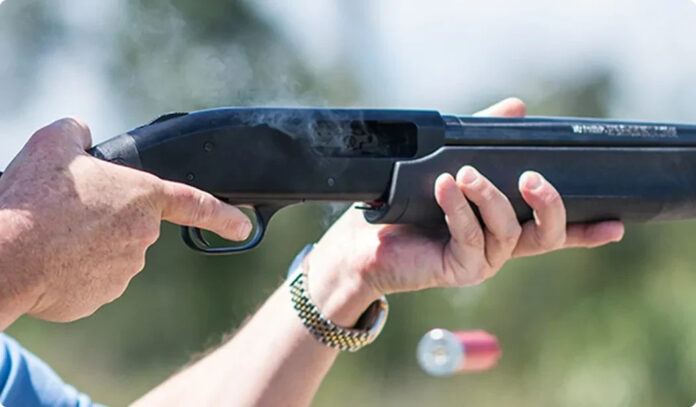Innovation is generally a good thing. Not always, mind you. Sometimes, innovation creates problems for some people, but for the most part, innovation tends to blaze new trails and makes people’s lives so much better.
The issue with innovation is that it has to be driven by people who care about the product being innovated. When the government decides to get involved, for example, things don’t work as well as some would like. Fuel economy standards essentially killed muscle cars, for example, because it was driven by government mandate and not by consumer demand.
So what does the at have to do with guns?
Well, that’s what ran through my mind when I read an op-ed over at The Hill. Written by a couple of anti-gunners from the Duke Center for Firearm Law, the op-ed pushes for innovation in the gun industry, but only in one particular direction.
In each of these cases, innovations have largely come in the form of increased lethality. These weapons kill people more quickly and reliably than their predecessors. The history of innovations that promote firearms safety, however, or that minimize the risks of firearms violence have been more checkered.
Consider the development of “smart guns,” which the surgeon general mentions in his report. A smart gun is a firearm equipped with a user authentication device, like the ones on our smartphones, that prevent operation by unauthorized people. Smart guns offer considerable promise in reducing the tragically high number of accidental shootings by children and the use of stolen firearms in crimes.
Although established firearms manufacturers developed functional prototypes more than a quarter century ago, the first smart gun on the U.S. market only appeared in 2023. So, what happened?
In 2002, New Jersey passed the Childproof Handgun Act in an attempt to encourage smart gun development. The law required that once a “personalized handgun” became available to the market for three years, no new traditional handguns would be allowed to be sold. By guaranteeing a market, the statute meant to boost innovation.
Yet the law backfired in spectacular fashion. Gun rights advocates objected to the law and boycotted both manufacturers and sellers, driving Colt and Smith & Wesson toward bankruptcy. Innovative start-up firms would now be completely responsible for development, testing and manufacturing of new products, without the possibility of being acquired by an established firm. Although a market for smart gun technology seemed to exist, innovation stalled.
Did we object to the New Jersey law? Yeah, we most definitely did. That’s because New Jersey tried to dictate innovation by promising a monopoly, if only for a time, for the first company to produce a viable “smart gun.”
But smart gun prototypes weren’t viable a quarter century ago. They were sort of almost viable, but they weren’t really ready for prime time. They had a long way to go. We know this because the current crop of supposedly smart guns isn’t viable, either. Not really.
All of these push for technology to somehow solve the problems, though, ignores the harsh reality that technology doesn’t solve all of our problems. It might solve some, but then it introduces new ones in its wake. Smart guns, for example, that use biometric data won’t necessarily work in environments where people are sweating. Sure, it’s easy to say to just stay in an environment where you’re not likely to sweat, but for some of us, that’s not really an option. If I leave my house anytime other than February, I’m probably going to break a sweat. Georgia is just flat-out hot.
Now, the authors do offer up something that’s not completely dumb.
Federal and state governments can fix some of these problems by revising the relevant statutes or through other policy choices. For example, if smart guns are part of the answer, governments could encourage institutional purchases by police departments and the military, increasing the potential for profit and decreasing costs for consumers.
On this, I agree. If so-called smart guns are viable, then law enforcement should be chomping at the bit for these guns. If the powers-that-be want to saddle us with this technology, then prove it’s viable by equipping police officers with them. I don’t know that the military is a viable test case for them, even under the best of circumstances, but surely law enforcement should be a useful testbed.
Which brings us to why that’s not happening.]
Sure, I can see some reticence from small-town departments that don’t have deep budgets but do have the lingering animosities most pro-gun people feel toward these firearms, but why isn’t the LAPD or NYPD or other major departments in anti-gun cities tripping over themselves to put these in cops’ holsters?
Could it be that despite a couple of lawyers from Duke’s claims, these guns aren’t nearly as viable as some claim?
Look, I’m not remotely hostile toward the idea of smart guns, so long as they can be keyed into multiple people in a household. I like technology and while I’m not an early adopter by any stretch of the imagination, I like seeing new technology come onto the market, and smart guns that only work for select people do offer advantages.
If they work.
So far, though, I’m not seeing a lot to suggest they do. The fact that no police department we can identify is using these supposedly viable firearms is a clue that calls for innovation from people who aren’t really familiar with firearms are kind of meaningless.
New Jersey definitely set smart gun development back, but that development wasn’t nearly as far along as the authors seem to think it was.




